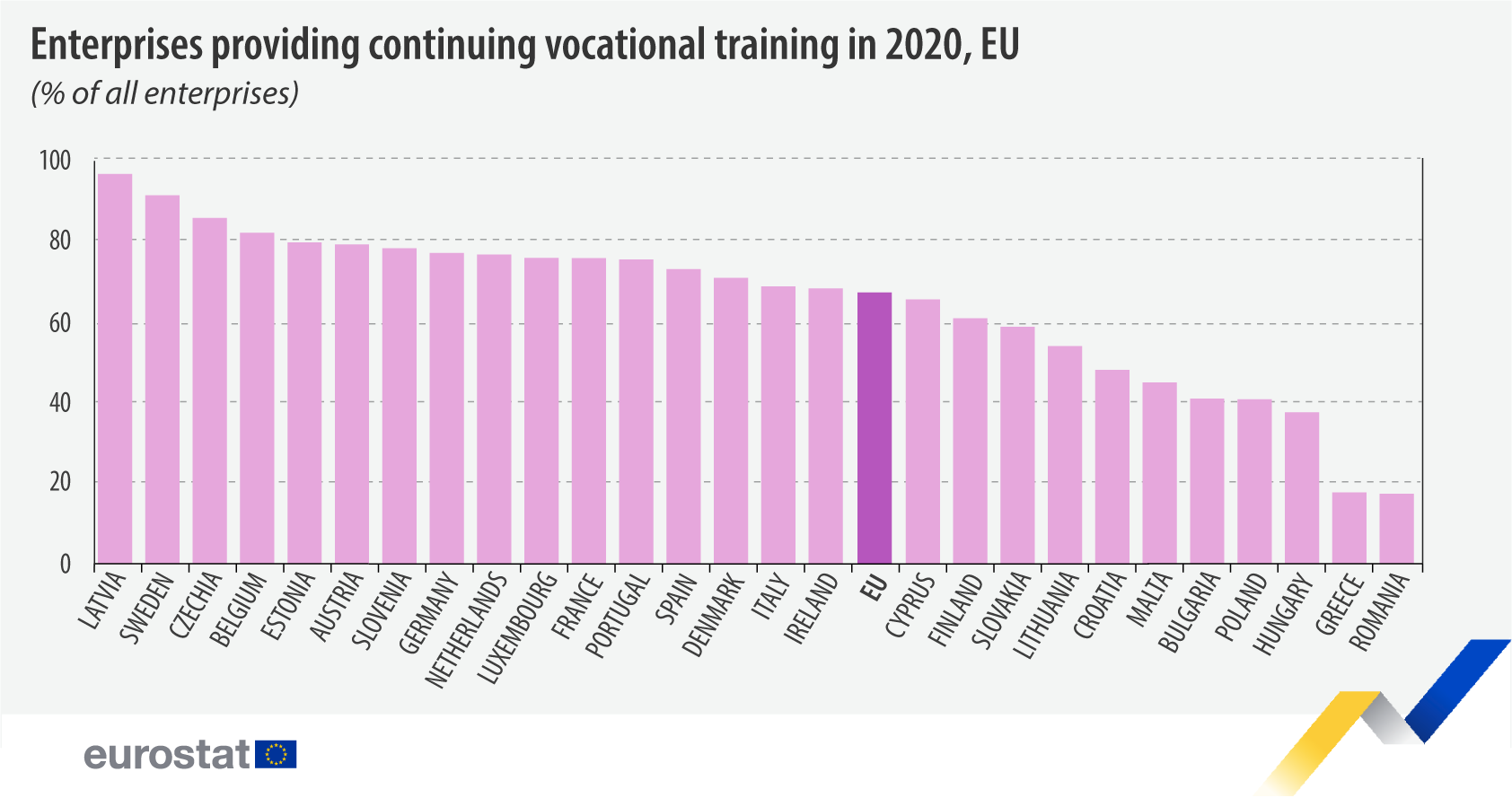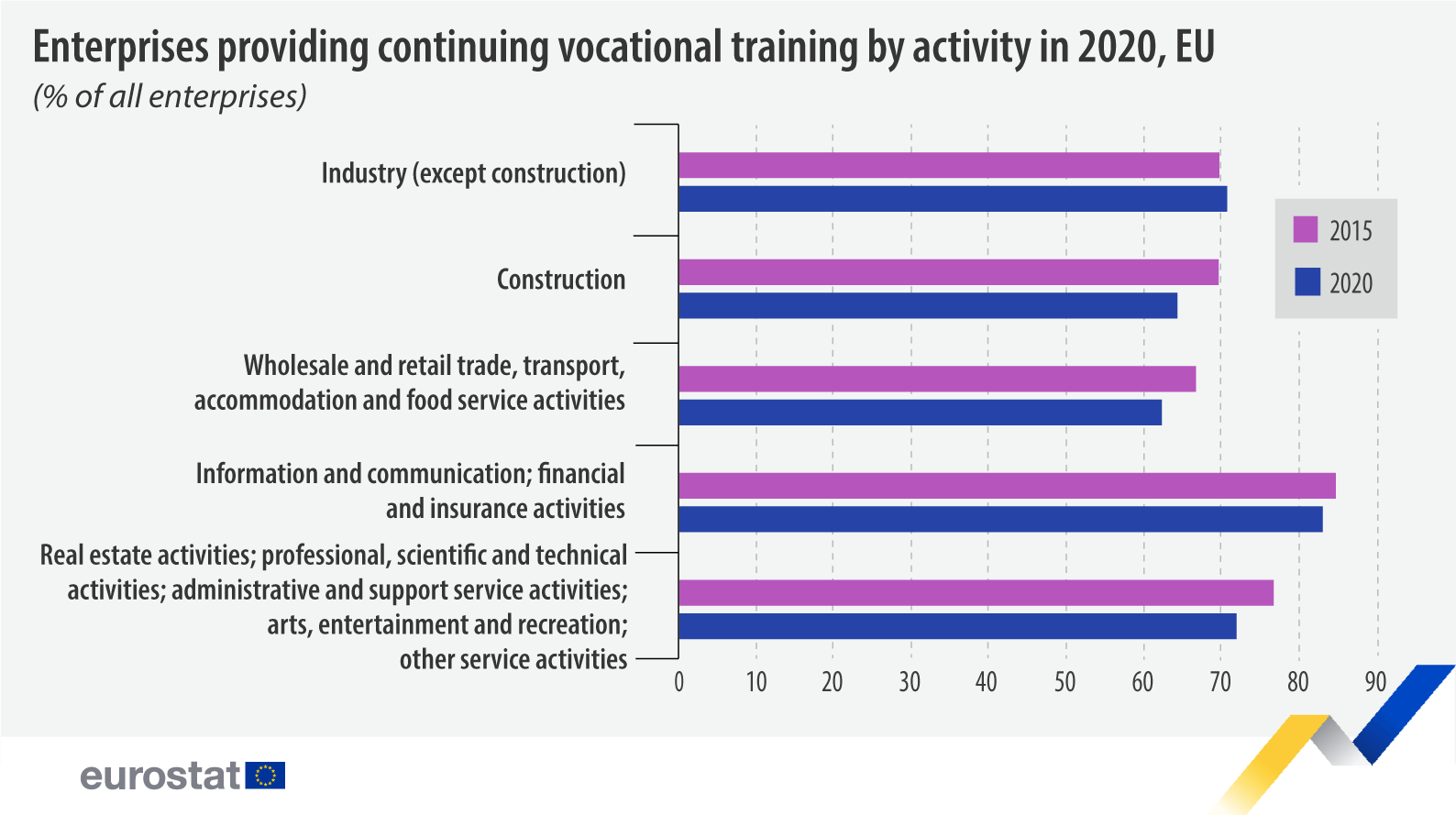Share of training enterprises decreases in 2020

In 2020, 67.4% of enterprises employing 10 or more persons in the EU were considered ‘training enterprises’, meaning that their staff either participated in continuing vocational training (CVT) courses or at least in one of the other forms of CVT (guided on-the-job training, learning cycles, etc.). Compared with 2015, there was a 3.1 percentage points (pp) decrease from 70.5%, which can most likely be explained by reduced business activities, closures, and restrictions due to the COVID-19 pandemic.
Source dataset: trng_cvt_01s
In 2020, the share of enterprises that provided any form of CVT was highest in Latvia with 96.8%, followed by Sweden (91.5%), Czechia (85.9), Belgium (82.2%) and Estonia (79.8%). The lowest percentage was in Romania (17.5%), followed by Greece (17.8%), then there is a big jump of almost 20 pp to Hungary (37.7%), Poland (40.9%) and Bulgaria (45.1%).
Decrease in almost all enterprises in services
In the EU, enterprises in services (other than distributive trades or accommodation and food services) were more likely to provide CVT, especially in the information and communication services and financial and insurance activities, where the proportion of enterprises providing CVT in 2020 was 82.8%. In 2020, only enterprises in industry (except construction) saw a little increase of 1 pp in the share of training enterprises in 2020 (70.5%) compared with 2015 (69.5%), while enterprises in all other economic activities reported a decrease of between 2 and 5 pp.
Source dataset: trng_cvt_01n2
The construction sector reported the highest decrease (-5.3 pp) in the share of enterprises providing CVT between 2015 (69.4%) and 2020 (64.1%), while the lowest decrease (-1.7 pp) was observed in ’information and communication services, financial and insurance activities’ sector, from 84.5% in 2015 to 82.8% in 2020.
For more information
- Statistics Explained article on statistics on continuing vocational training in enterprises
- Thematic section on education and training
- Database on education and training
Methodological notes:
- CVT in enterprises concerns training measures or activities which have as their primary objective the acquisition of new competences or the development and improvement of existing ones. CVT in enterprises must be financed, at least in part, by the enterprise and should concern persons employed by the enterprise (either those with a work contract or those who work directly for the enterprise such as unpaid family workers). Persons employed holding an apprenticeship or training contract should not be taken into consideration for CVT. The training measures or activities must be planned in advance and must be organised or supported with the special goal of learning. CVT can take place on-site, online or both (blended/hybrid learning). Random learning and initial vocational training are explicitly excluded.
If you have any queries, please visit our contact us page.


